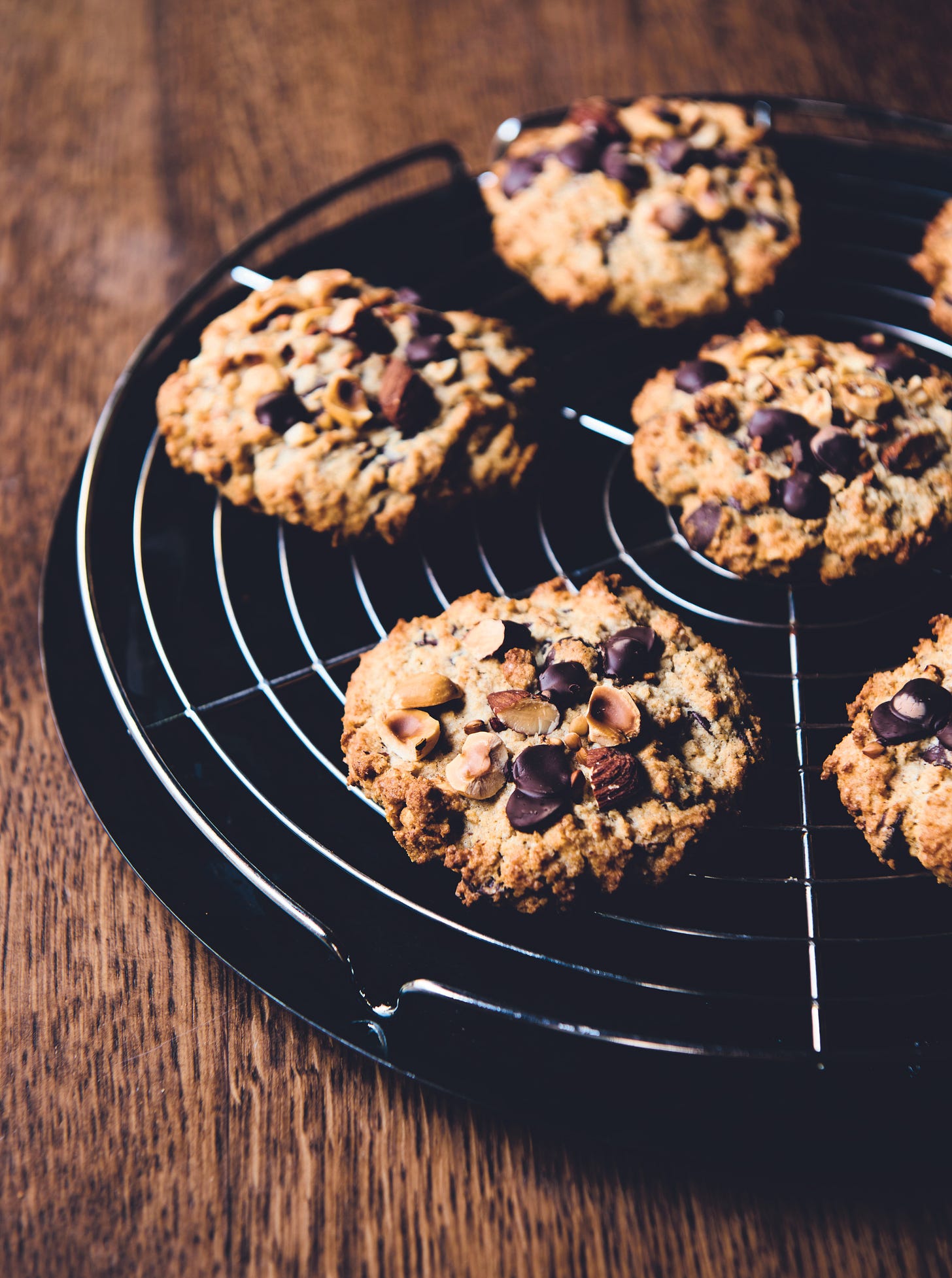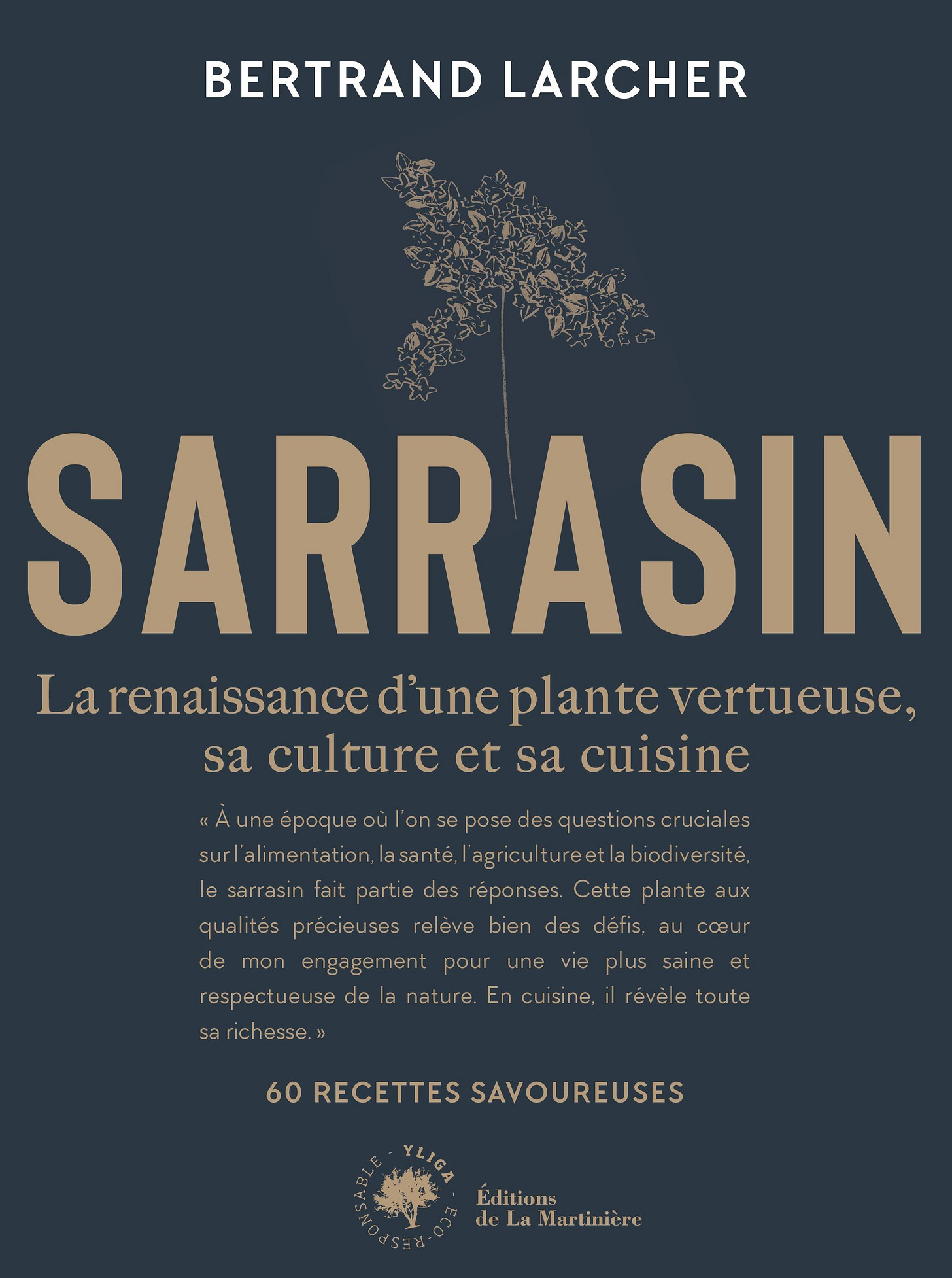Recipe: Cookies au sarrasin (buckwheat cookies, French style)
1 bowl, 1 happy little pseudo-grain, just 10 minutes of prep
Dessert demons and baking buds, this is your baking assignment following last week’s newsletter on the climate case for buckwheat.
In France, buckwheat flour is called sarrasin or blé noir, and it’s synonymous with the northwestern region of Brittany, which at peak production in the 1860s grew half the country’s buckwheat. Galettes may be the most famous Breton use of sarrasin, but they’re far from the only one.
Perhaps no one knows this better than Bertrand Larcher, who’s helping lead a French buckwheat revival. He owns Breizh Café, a line of crêperies in France and Japan whose name means Brittany in the region’s native language. His restaurants star buckwheat galettes alongside wheat crêpes, but his dedication to France’s favorite pseudo-grain goes even further afield.
He has a buckwheat farm outside Saint Malo (which you might remember as the setting of All the Light We Cannot See) and a line of buckwheat products that includes some alarmingly addictive salted caramels I picked up last week in Paris. He also has a cookbook—appropriately called Sarrasin—that brings to life an entire buckwheat culinary landscape.
He’s generously shared a recipe from Sarrasin that’s just about the easiest, most snackable introduction to this climate-positive pseudo-grain: his buckwheat cookies. Find the recipe below, which I translated from French (god help us) and paired with a few of my own headnotes.
Recipe: Cookies au sarrasin, or buckwheat cookies
I think of these cookies as quintessentially French, because they’re not very sweet, unlike the sugar bombs that make up most of American baking (and my diet). And while they’re studded with chocolate chips, think of these crisp, ever-so-slightly-cakey bites first and foremost as buckwheat cookies. The predominant flavor is the grain’s hazelnutty-toastiness, and you’ll know you’ve brought it out fully once the cookies have begun to turn a light golden on the tops and edges (as in the photo below). The dough comes together in one bowl in 10 minutes flat. And since there’s no gluten, you can’t overmix. Decorate with chocolate chips, nuts (hazelnuts are a French favorite, though any will do), and if you have them, buckwheat grains—I didn’t, so I used flaky salt instead, and I’m never looking back.
Makes: About a dozen cookies
Prep time: 10 minutes
Bake time: 15 minutes
Ingredients
60g (4 tablespoons + ½ teaspoon) butter, room temperature
60g (packed, slightly rounded ¼ cup) brown sugar (the original recipe calls for cassonade, which is common in France, but brown sugar is a reasonable American substitute)
105g (¾ cup) buckwheat flour
45g (½ cup) almond flour
3g (¾ teaspoons) baking powder
1 egg
20g (1 tablespoon + 1 teaspoon) milk
70g (¾ cup) chopped nuts of your choice
70g (½ cup) chocolate chips
15g (small handful) buckwheat grains, optional
Flaky salt (my addition)
Method
Preheat the oven to 335F. Line a baking sheet with parchment paper.
In a large bowl, use a spatula to mix together room-temperature butter, brown sugar, buckwheat and almond flours, and baking powder. Add the egg and the milk, then mix again until the batter is perfectly smooth.
Reserve a portion of the chopped nuts, chocolate chips (and buckwheat groats, if using) for decor. Add the remainder to the cookie dough and mix well. Using a spoon or cookie scoop, place scoops of cookie dough onto the baking sheet. Flatten them well with the back of a spoon (they won’t spread on their own), then add the tasty bits you reserved for décor. Press the bits lightly to adhere.
Bake for 15 minutes (or a few longer), until the cookies are golden but not overly browned.
Once baked, transfer the cookies to a cooling rack to cool.
This recipe is excerpted and reprinted with permission from Bertrand Larcher’s cookbook Sarrasin, published in 2022 by Éditions de la Martinière. I translated it into English (so any mistakes are certainly mine alone, or perhaps my high school French teacher’s) and added and tested with American cup measures. As always with baking, I recommend sticking with grams if you can. A kitchen scale is the best investment in my sweet tooth I ever made.
Want a video guide to this recipe? For better or for worse, I made you one on TikTok.






